Patrick Bevin's bike: Team DSM's Scott Foil for the 2023 season
We borrowed Bevin's bike from the DSM mechanics for ten minutes at the team's winter training camp
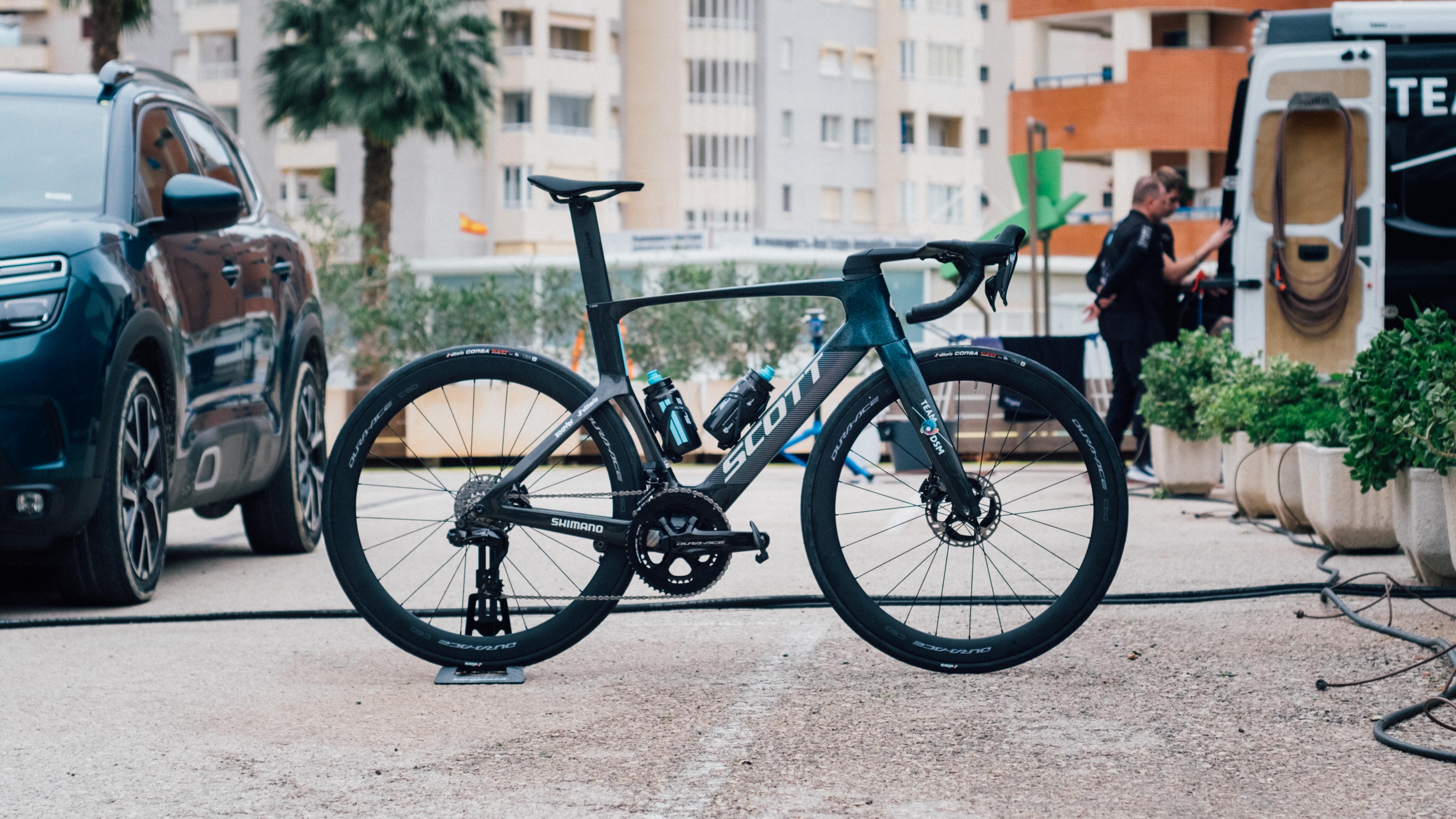
Last year's Presidential Tour of Turkey GC winner Patrick 'Paddy' Bevin has been racking up a very respectable palmares over the years, including 4th in the time trial at the 2019 World Championships, and stages at the Tour Down Under and the Tour of Romandie. This year he's gearing up to do more of the same for Team DSM, having transferred from the slightly beleaguered Israel-Premier Tech squad, who suffered World Tour relegation at the end of the 2022 season.
With a new year and a new team comes a new bike and fresh components to get used to, so what is Patrick Bevin's bike for 2023?
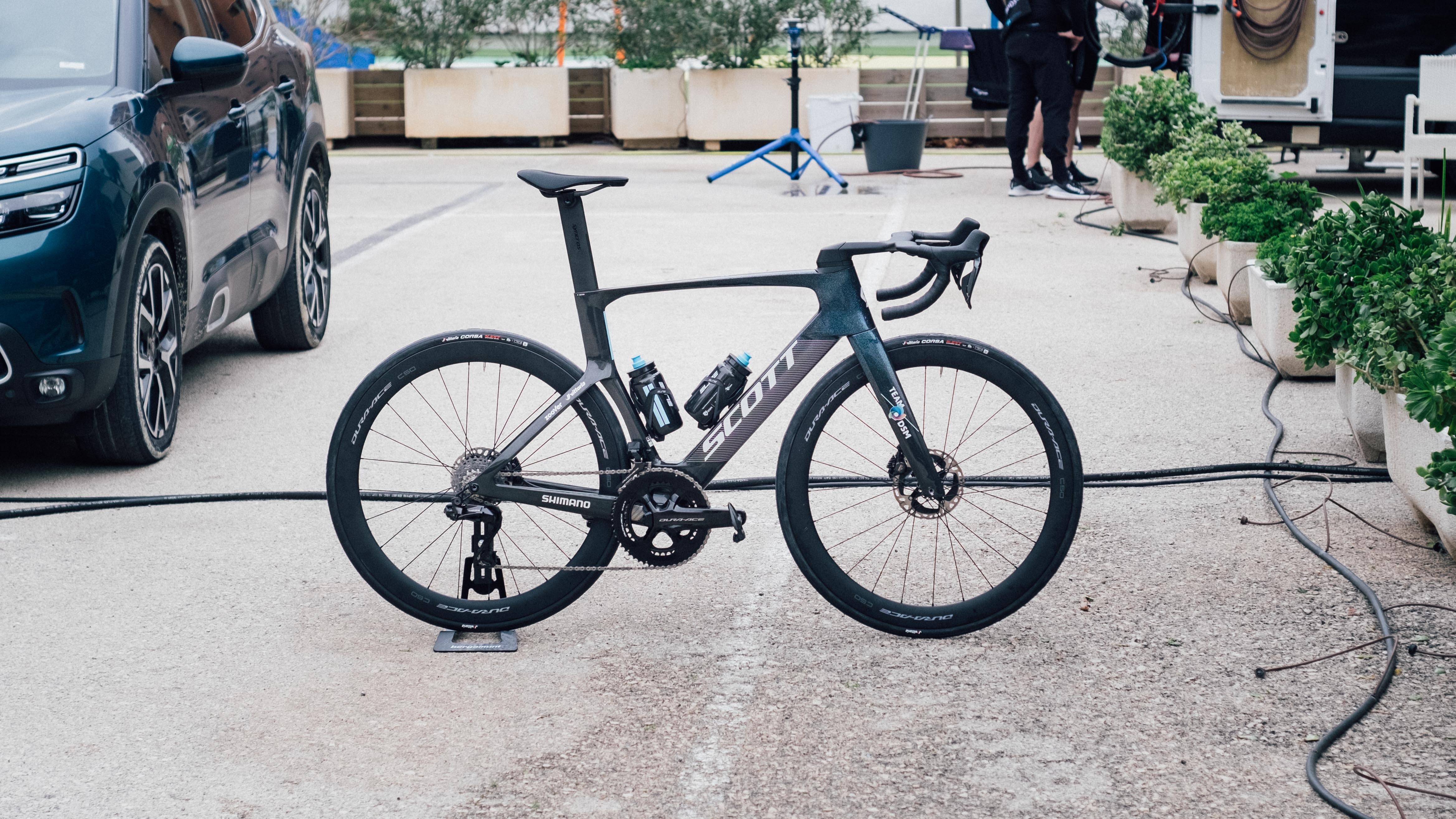
Patrick Bevin's bike for 2023
The DSM squad are sponsored by Scott, and for the majority of races, Bevin's bike will be the latest Scott Foil, which launched during the Tour de France in 2022. As with the galleries we've already brought you for Remco Evenepoel's bike, Tadej Pogacar's bike and Elisa Balsamo's bike, we managed to talk our way into the mechanic's area at the DSM training camp service course in Alicante and take some pictures to give you a better idea of how the pros like their bikes set up.
While the old Scott Foil was more of an all-rounder, this generation is an all-out aero bike, bucking the industry trend for converging on a single main race bike. The deep tube shapes and horizontal top tube all aim to cheat the wind, and the cockpit is something to behold, though it isn't the one piece bar-stem that's to be found on the consumer-spec Foil.
Being a Shimano-sponsored team, his Scott Foil is running a complete Dura-Ace build. The wheels are Dura-Ace too, but a non-tubular set, running a set of 26mm Vittoria N.EXT with graphene tubeless-ready tyres. Interestingly they're not set up tubeless, instead opting for inner tubes; the mechanics did describe them as 'training tyres'.
What size is Patrick Bevin's bike?
At 1.8m tall, Bevin is at the top of what you'd deem suitable for his chosen size of frameset: 54cm. Most pros like to keep their frames smaller and compensate in terms of reach with a longer stem. This tends to keep the wheelbase shorter for more rapid handling, the overall weight down, and the stack (the height of the bars relative to the bottom bracket) lower, and thus more aerodynamic.
Bevin's bike isn't running an exceptionally long stem, especially in comparison to what you'll find on Michael Matthews' bike, for example, instead offsetting the short reach with a handlebar with a lot of forward sweep, as we'll get into in more detail below.
Get The Leadout Newsletter
The latest race content, interviews, features, reviews and expert buying guides, direct to your inbox!
Patrick Bevin's Scott Foil: Specifications
| Frame | Scott Foil - 54cm |
| Groupset | Shimano Dura-Ace Di2 9250 12-speed |
| Brakes | Shimano Dura-Ace 9270 hydraulic disc |
| Wheelset | Shimano Dura-Ace C50 |
| Tyres | Vittoria Corsa N.EXT Graphene TLR |
| Handlebar/Stem | Syncros Creston iC SL - 380mm |
| Chainset | Shimano Dura ace FC-9200P - 54/40T - 170MM |
| Power meter | Shimano Dura ace FC-9200P |
| Pedals | Shimano Dura-Ace R9200 |
| Saddle | Syncros |
| Bottle cages | Elite Vico Carbon |
| Bottles | Elite SRL |
| Bar tape | Syncros Super Light |
| Computer | Wahoo |
Given Bevin's prowess against the clock, it's no surprise to see him opting for the aero model in the Scott range. It's ideal for fast, flatter stages, or making the most of one's time in the breakaway. It's a relatively stock build, more or less identical to John Degenkolb's bike from last year, though there are some notable changes that distance it from the consumer version. We'll get to those later on.
To begin with the frame. The details are all-out aero, of course, but the paintwork is particularly striking; in flat light, it doesn't look much more than a deep turquoise-to-black fade, but when the sun hits it there's a serious glitter effect that really pops.
The drivetrain is the top-of-the-range Dura-Ace Di2, complete with a power meter for each leg, one mounted to the spider and the other built into the non-drive side crank arm. A 54/40 chainset transfers the power, as is more or less ubiquitous across the pro ranks except for extremely flat stages, time trials, or very hilly stages where this may change.
The wheels are interesting given that, as mentioned above, they are tubeless-ready but not set up tubeless. As the team is sponsored by Vittoria, and as we spotted some new Vittoria Corsa Pro tubeless tyres fitted to Jumbo-Visma bikes, it's a sensible assumption to assume that DSM will also be using these in due course. The Vittoria Corsa N.EXT tyres fitted up in this case are 26mm wide front and rear, and are definitely not something he'd use in a race; they're heavier and less compliant (and therefore slower and less grippy in some circumstances) than the cotton-cased Corsa models, and what we suspect from the Corsa Pro.
Unlike the consumer-spec Scott Foil, Bevin's uses a solid aftermarket inline Syncros seatpost; pros have no need for an integrated rear light, though this also means he's given up the additional compliance on offer from the elastomer. Up front, the bar-stem, a Syncros Creston iC model, has noticeably more forward sweep on offer than the stock linear option. At 380mm wide it only comes with a nominal 110mm stem, but the forward sweep of the bars adds additional reach beyond the steering axis. Inwardly turned hoods mirror those of Evenepoel, Pogacar and Matthews that we've seen so far this season - a trend that peaked at the Tour Down Under prologue. Out front, a Wahoo computer takes care of all the data tracking.
In addition to turned-in hoods, Bevin opts to run sprinter blips in the drops for easier shifting at full gas. This is a relatively common mod, and some climbers opt for satellite shifter blips on the tops.
Atop the non-standard seatpost is an as-yet-unreleased saddle. We don't know much more than this, beyond that it is of Syncros origin and has carbon rails.
In terms of contact points Bevin is using Dura-Ace pedals, and his bar tape appears to be Syncros Super Light. The mechanics have cut it off very close to the hoods, more so than most we've seen, but if that's what Paddy wants then more power to him; it certainly indicates that he doesn't plan on pootling around on the tops very often.
Aside from the Elite bottles and cages, which aren't hugely noteworthy unless you're really into water bottles, one final detail worth pointing out is that this is possibly a bike from the 2022 season, used by another rider, and repurposed for Bevin. Comparing it to Degenkolb's bike the only real changes to the paint are in the sponsor decals on the seatstays. On Bevin's bike, the seatstay decals are stickers, under which you can see the topographic outline of last season's sponsors.
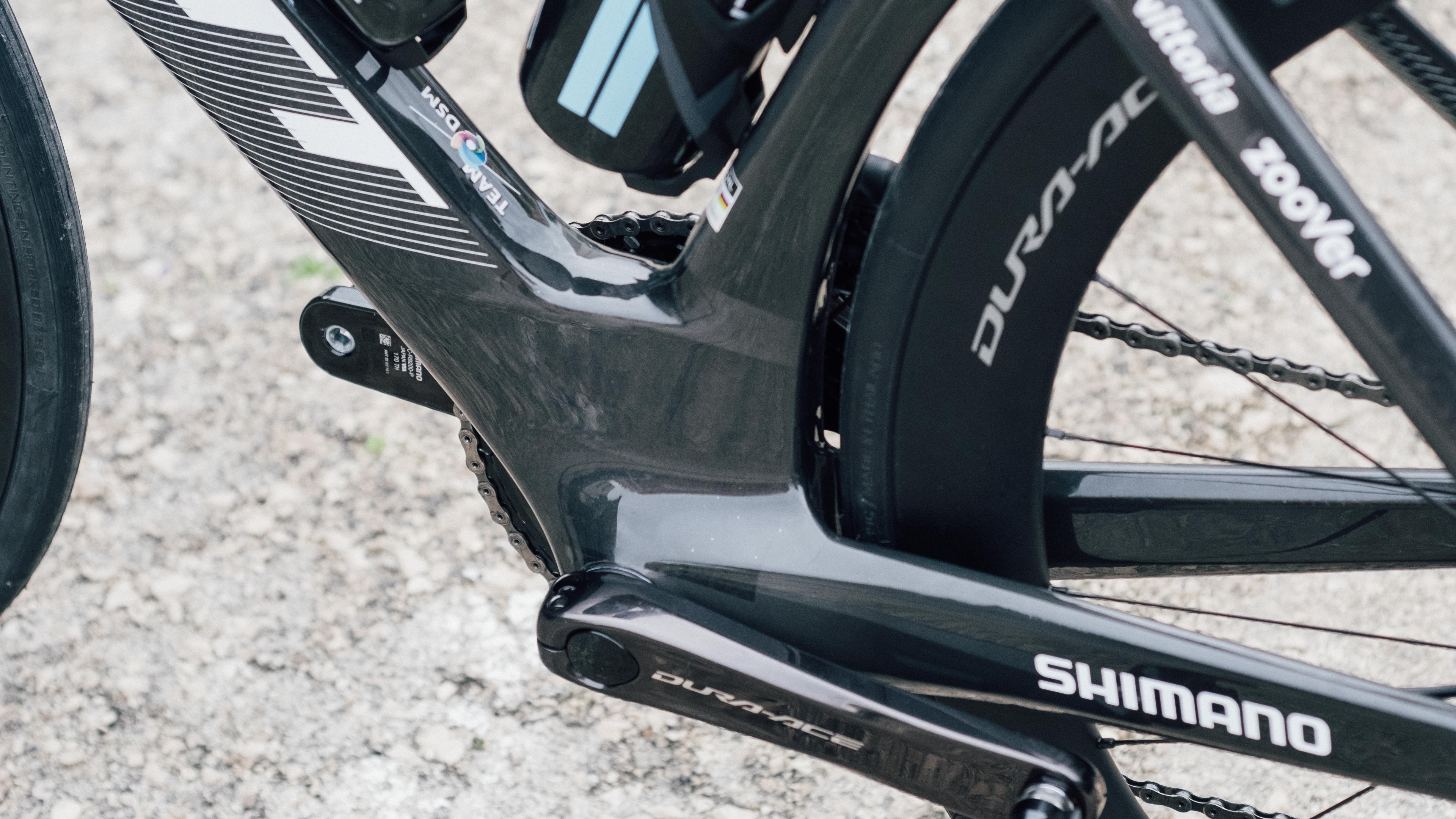
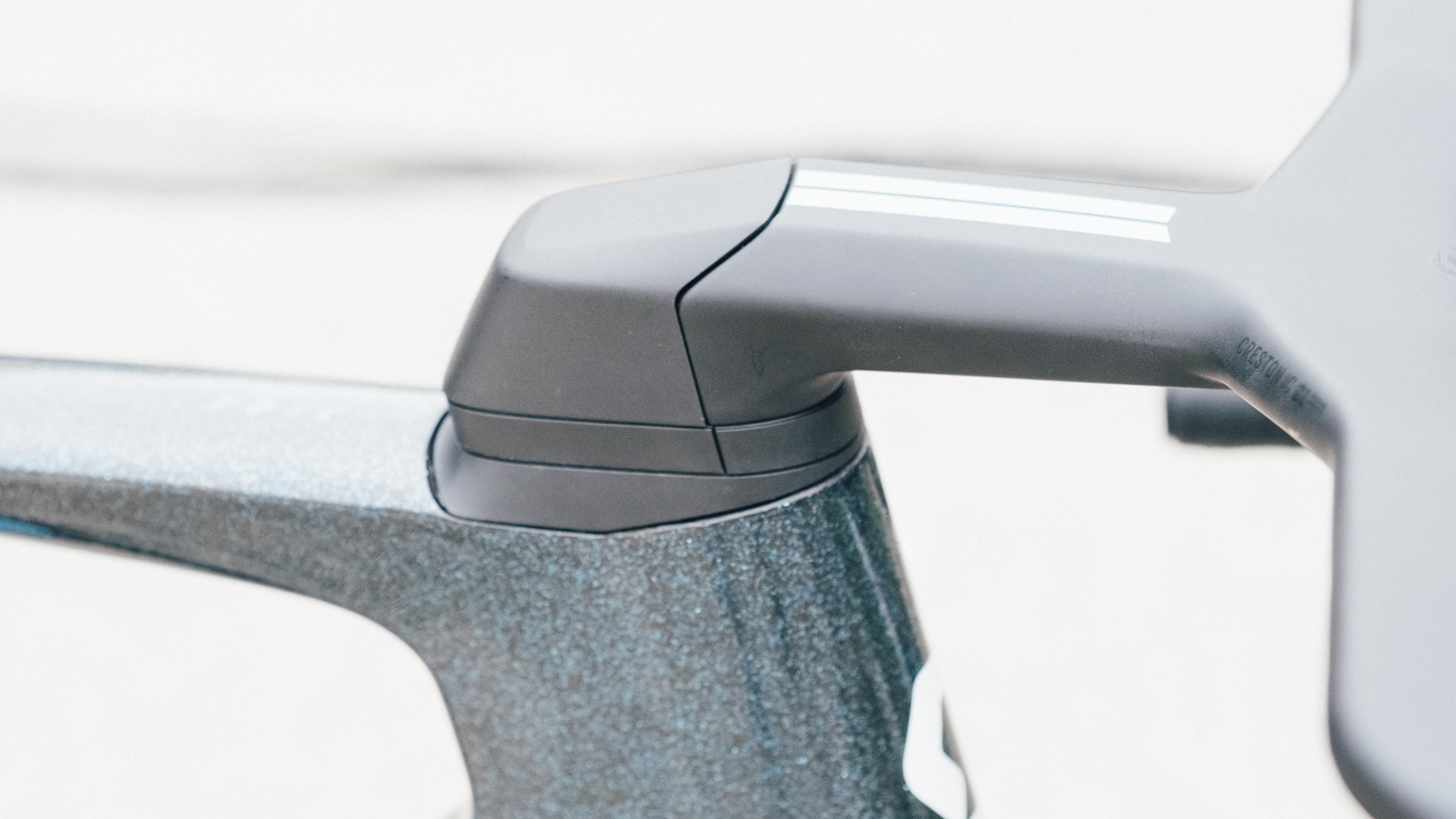
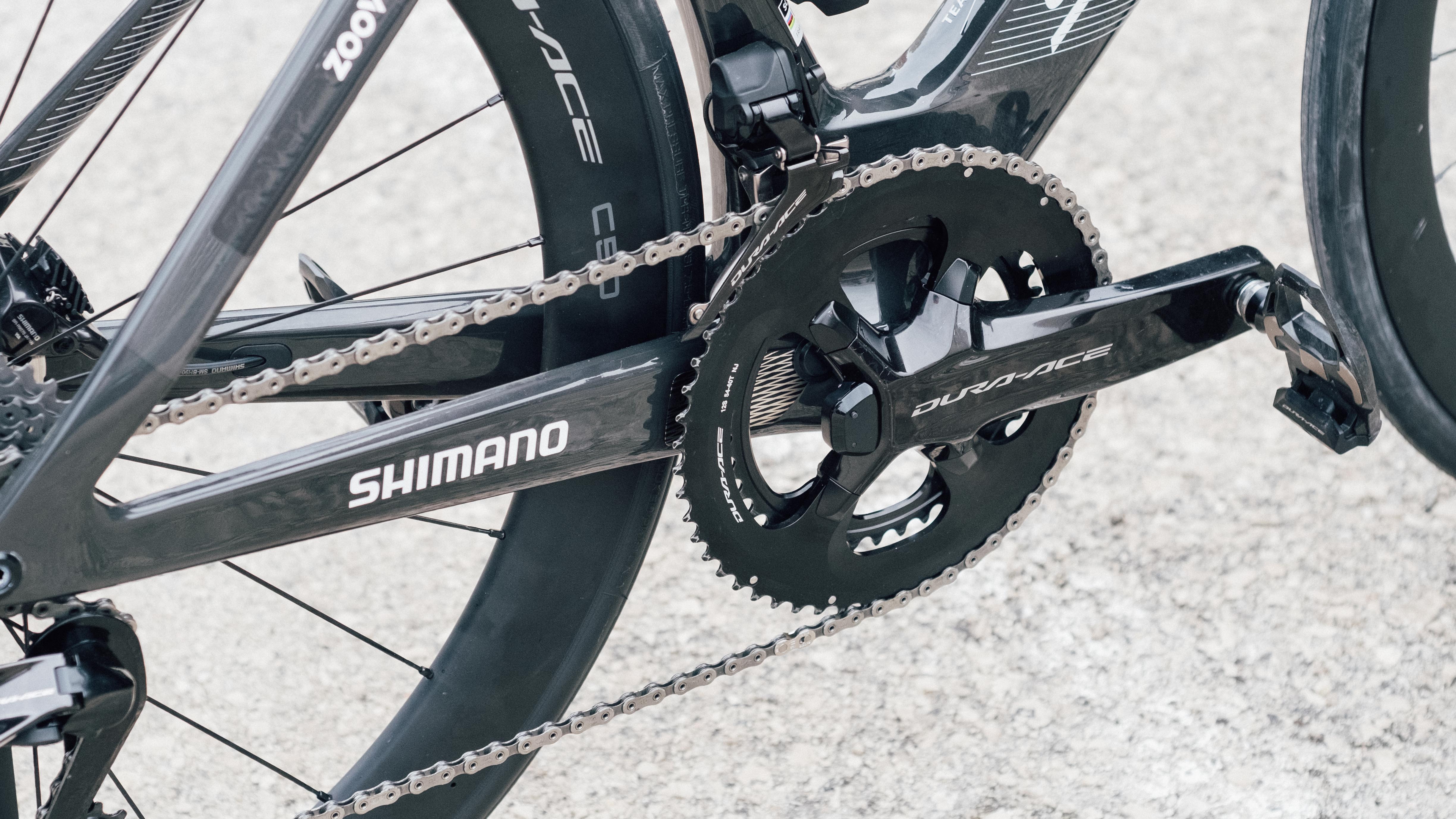
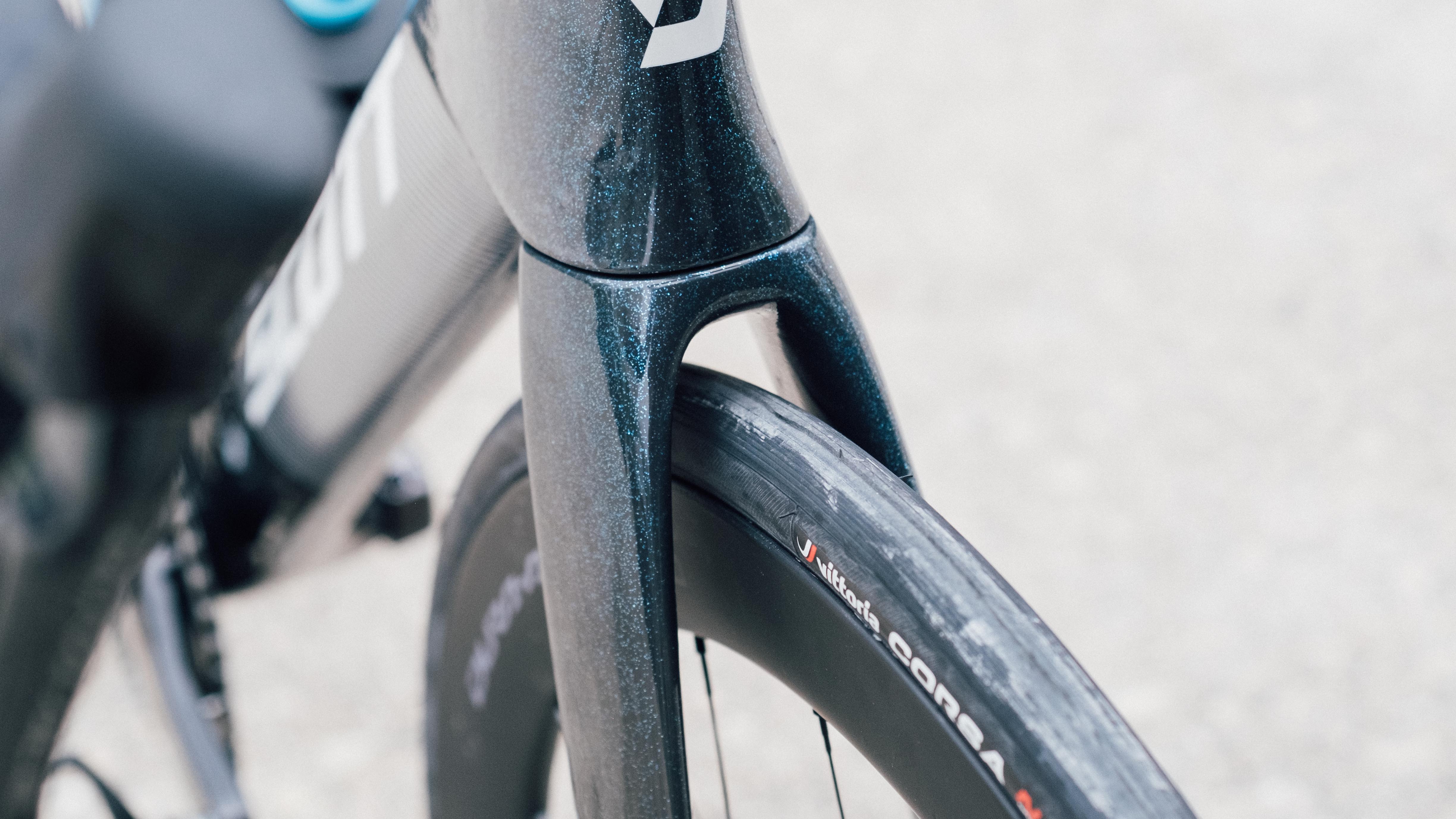
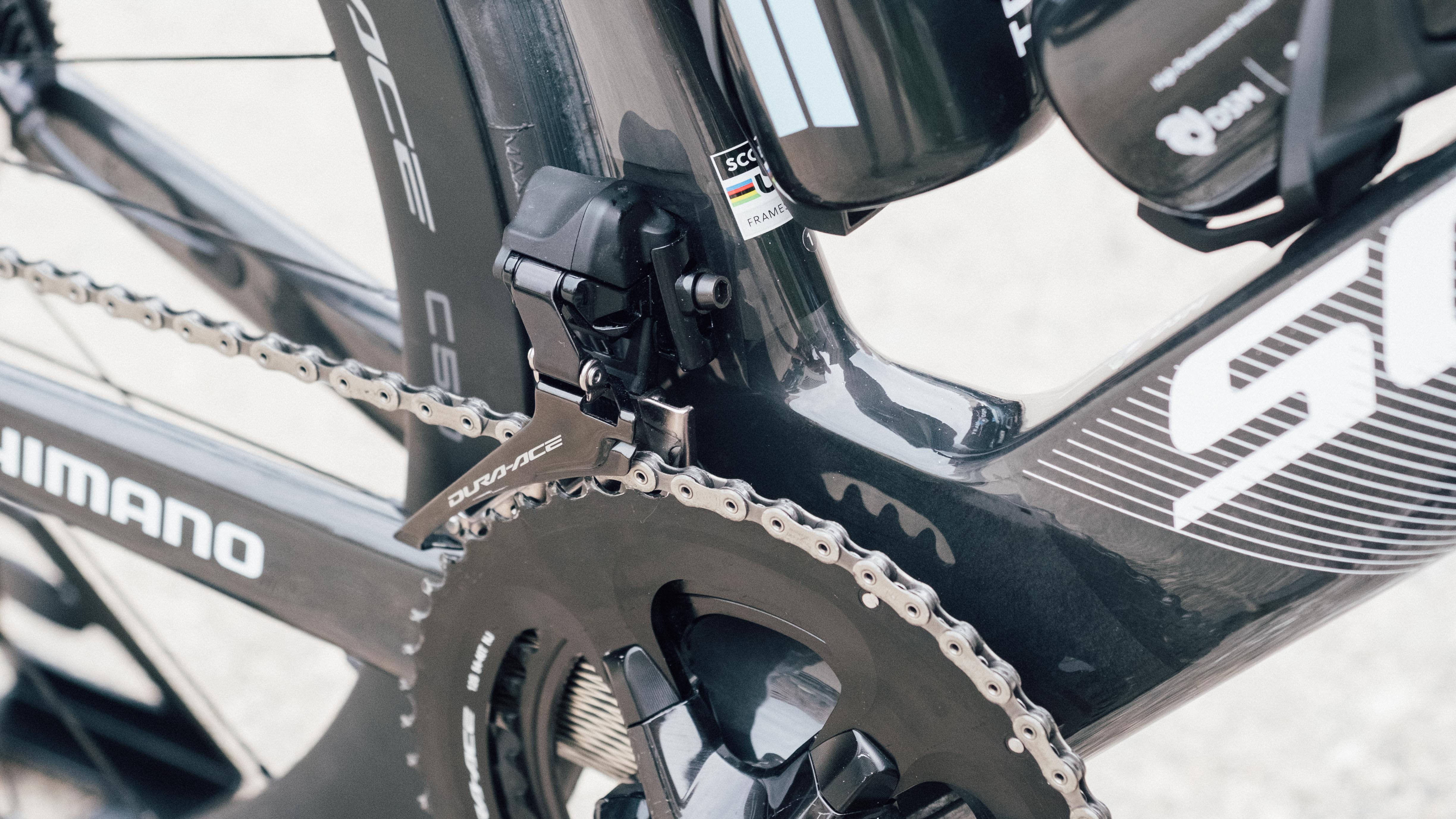
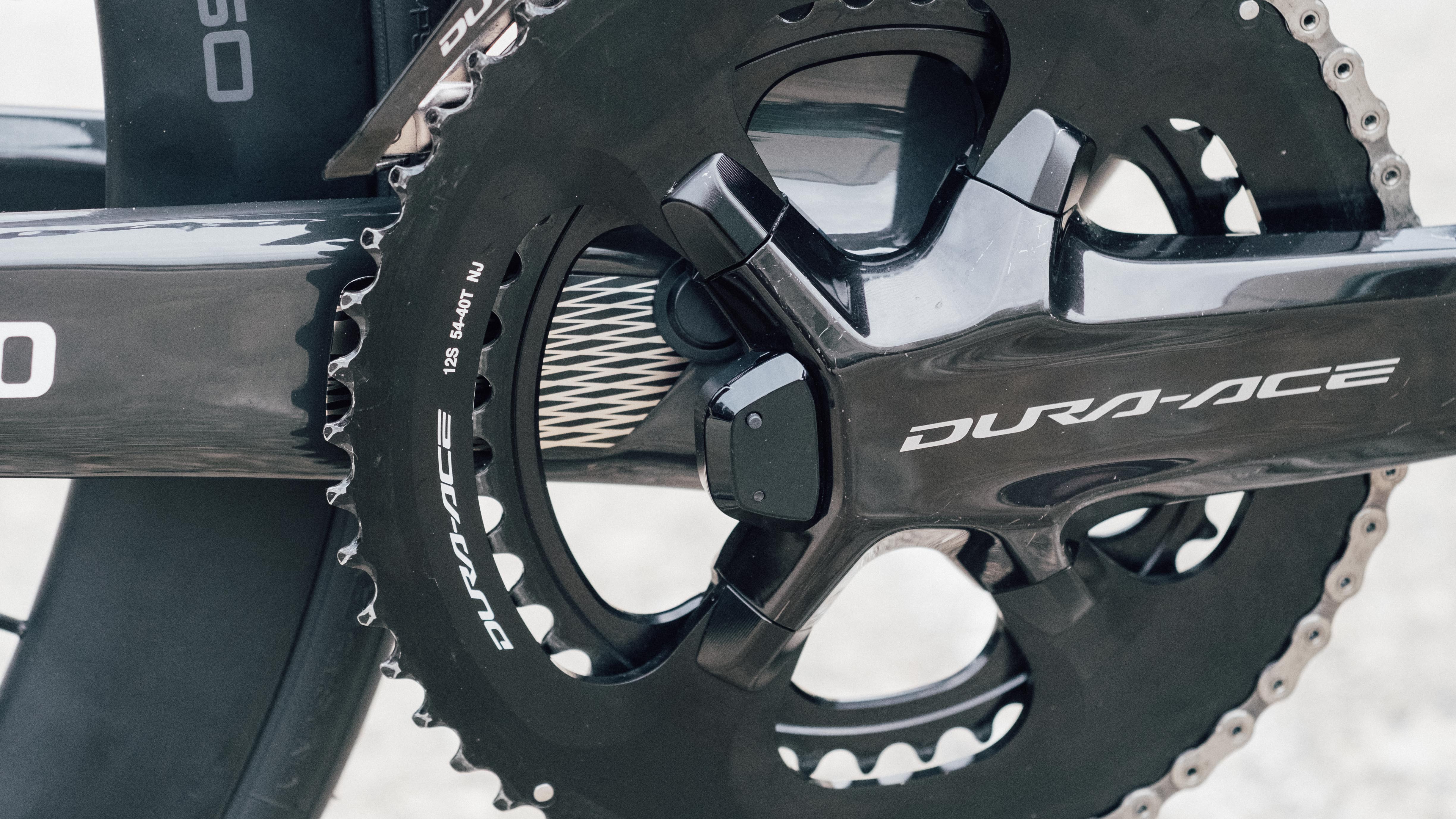
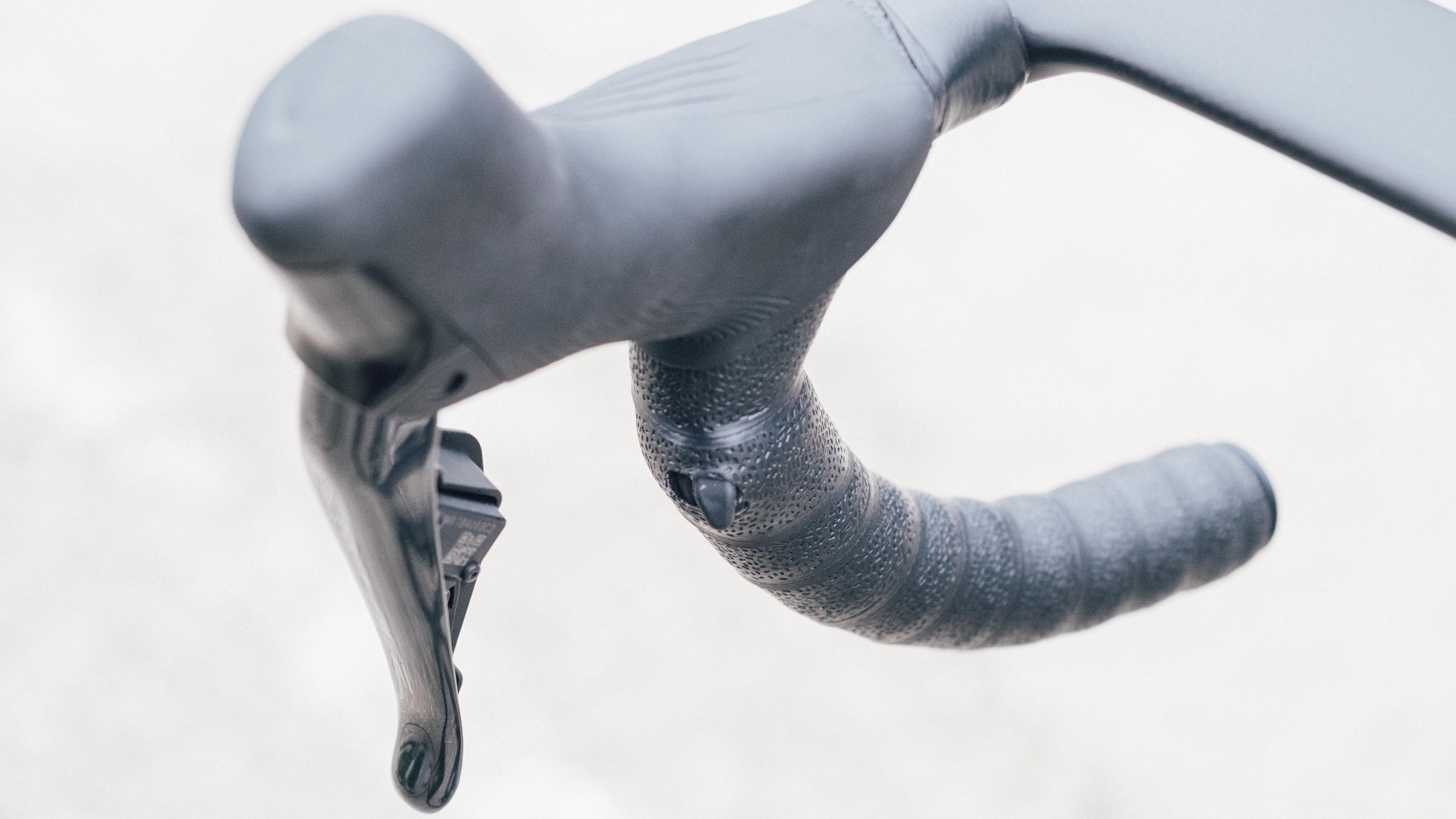
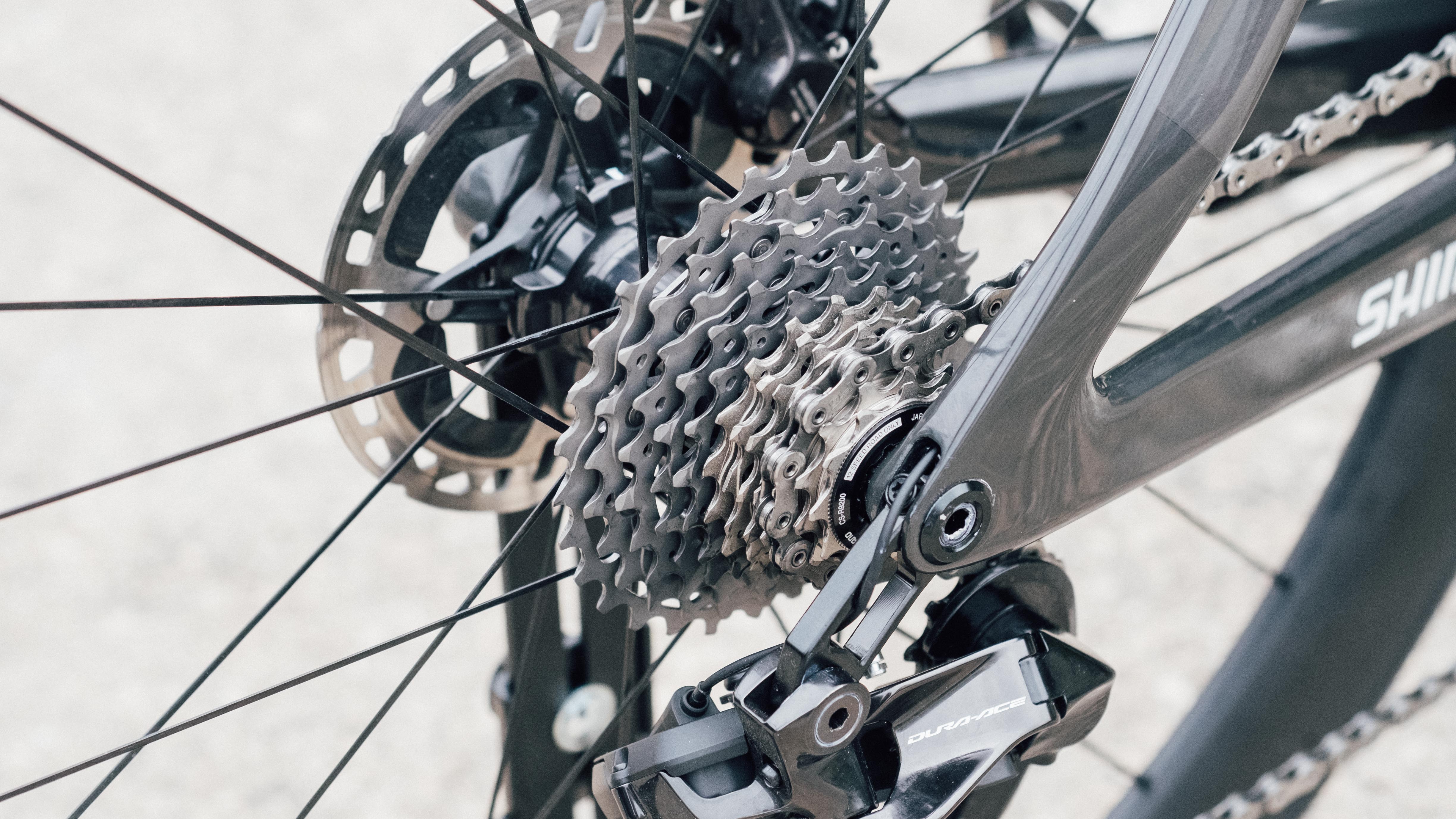
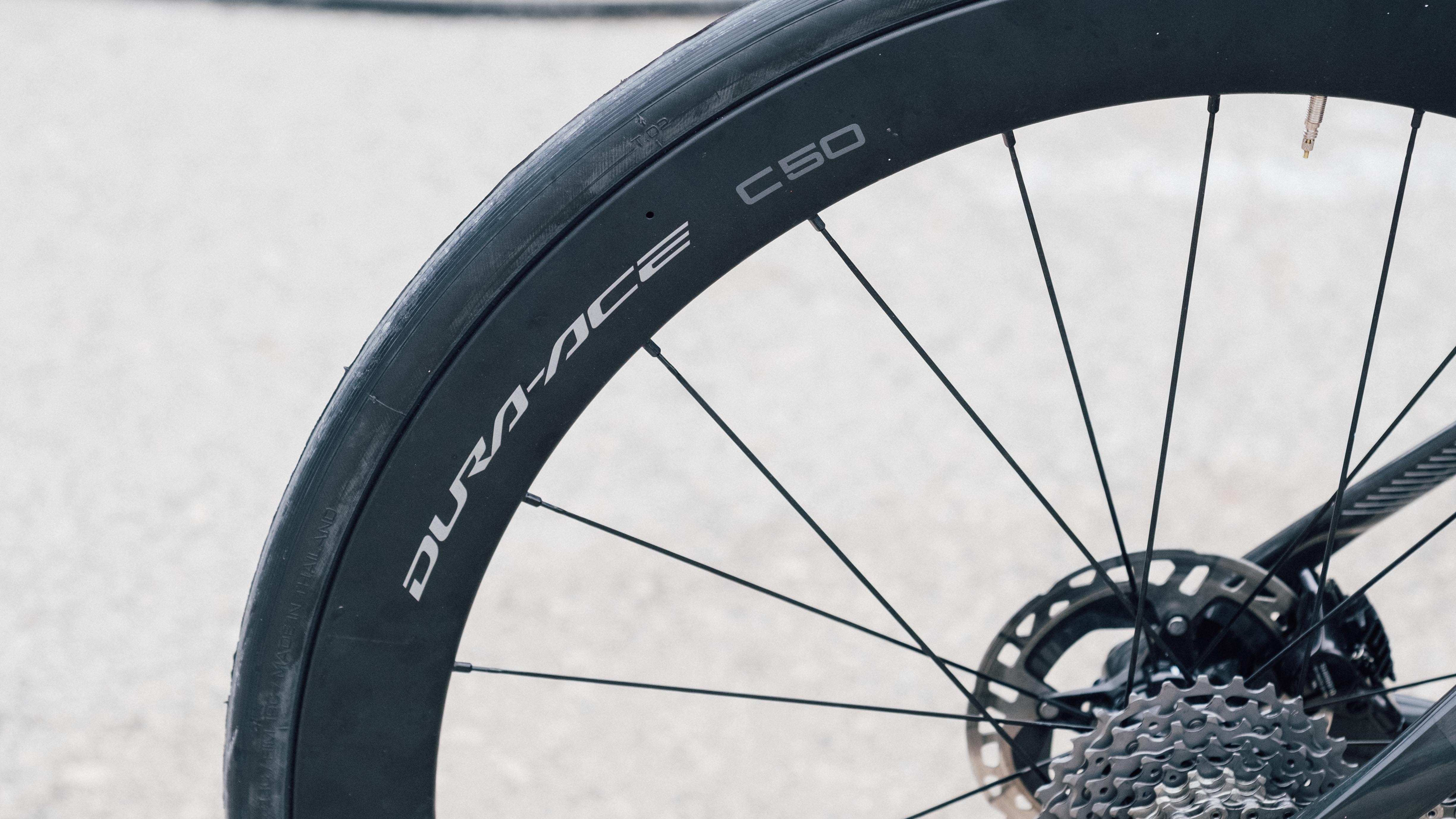
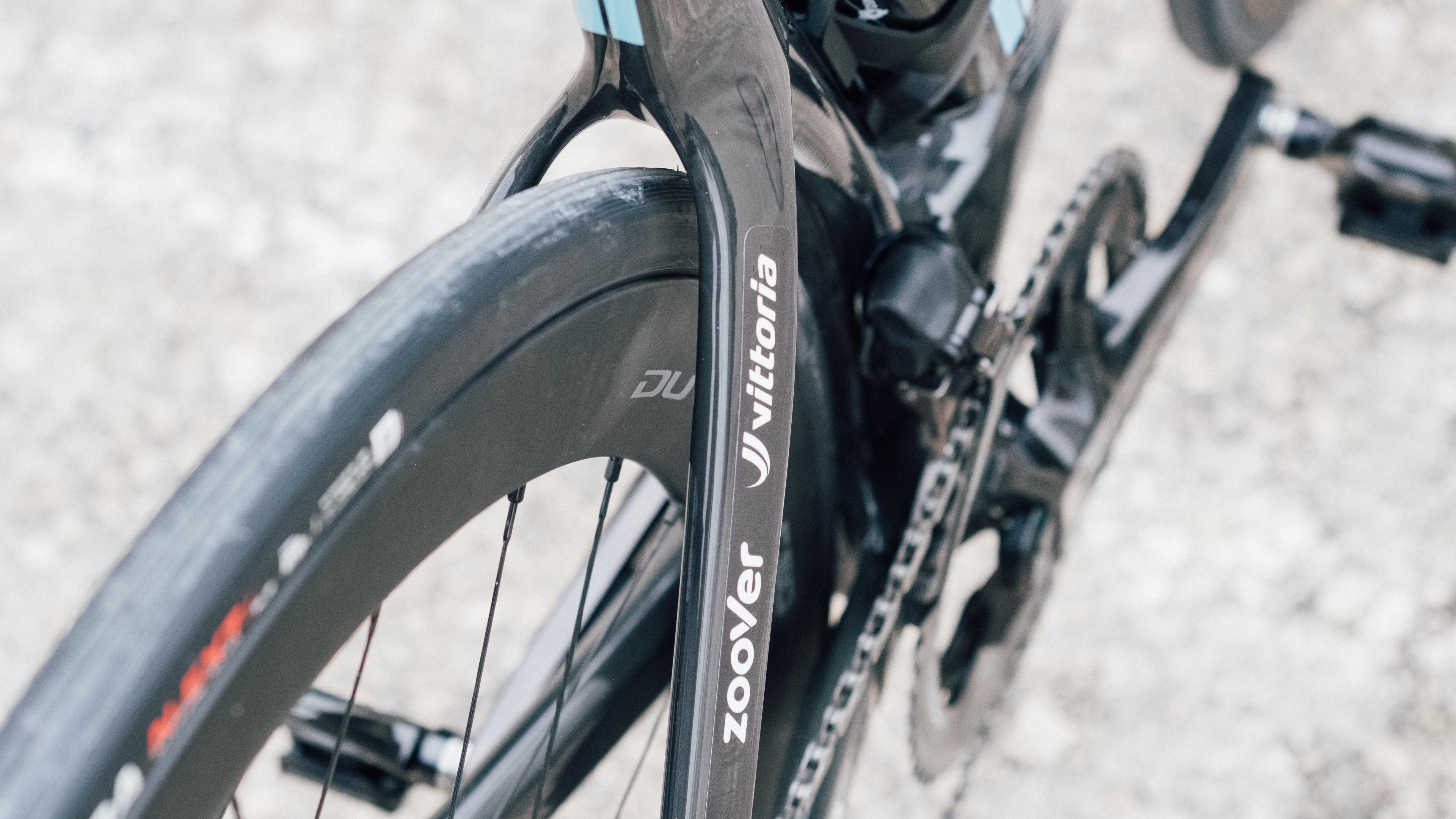
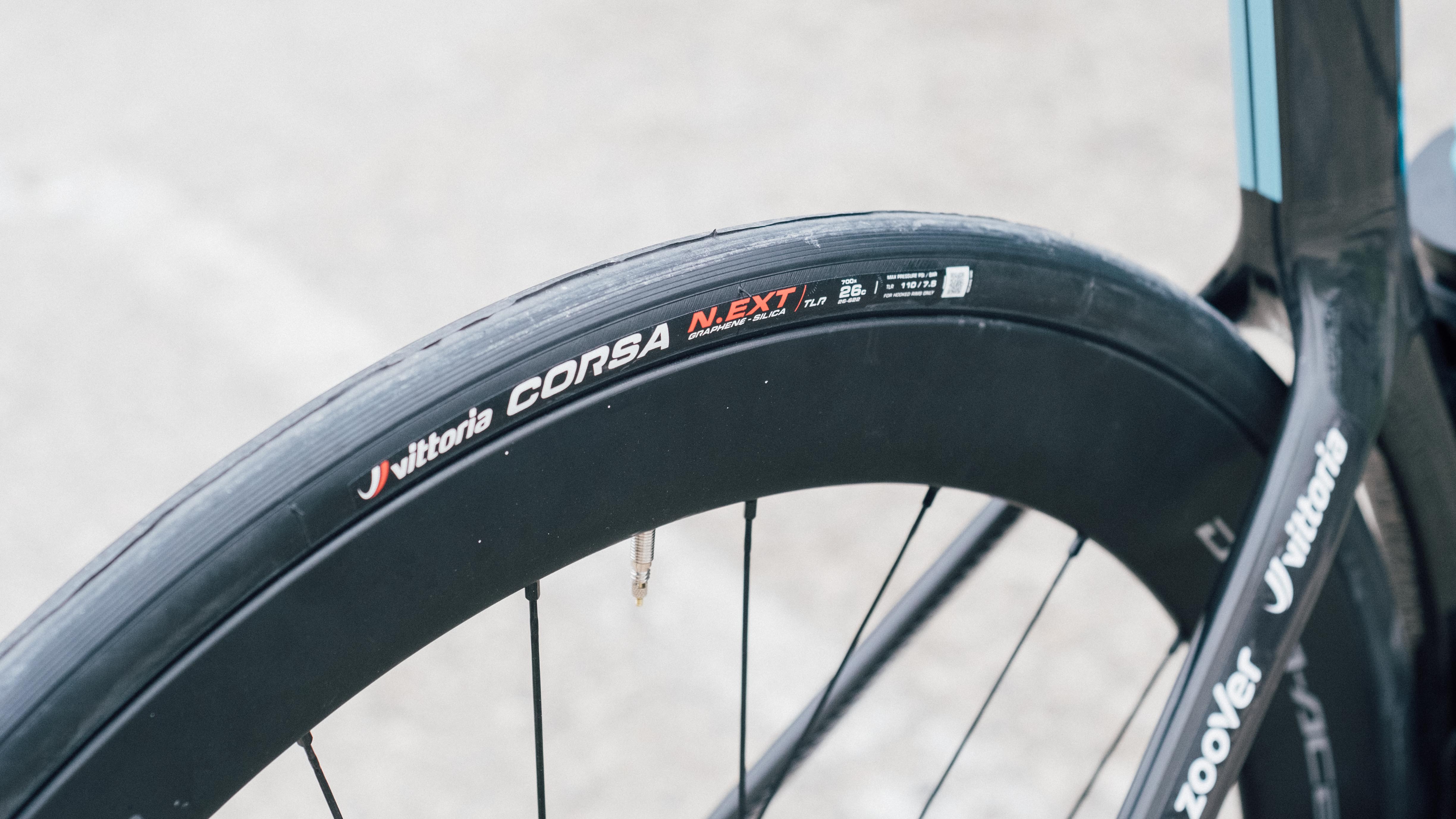
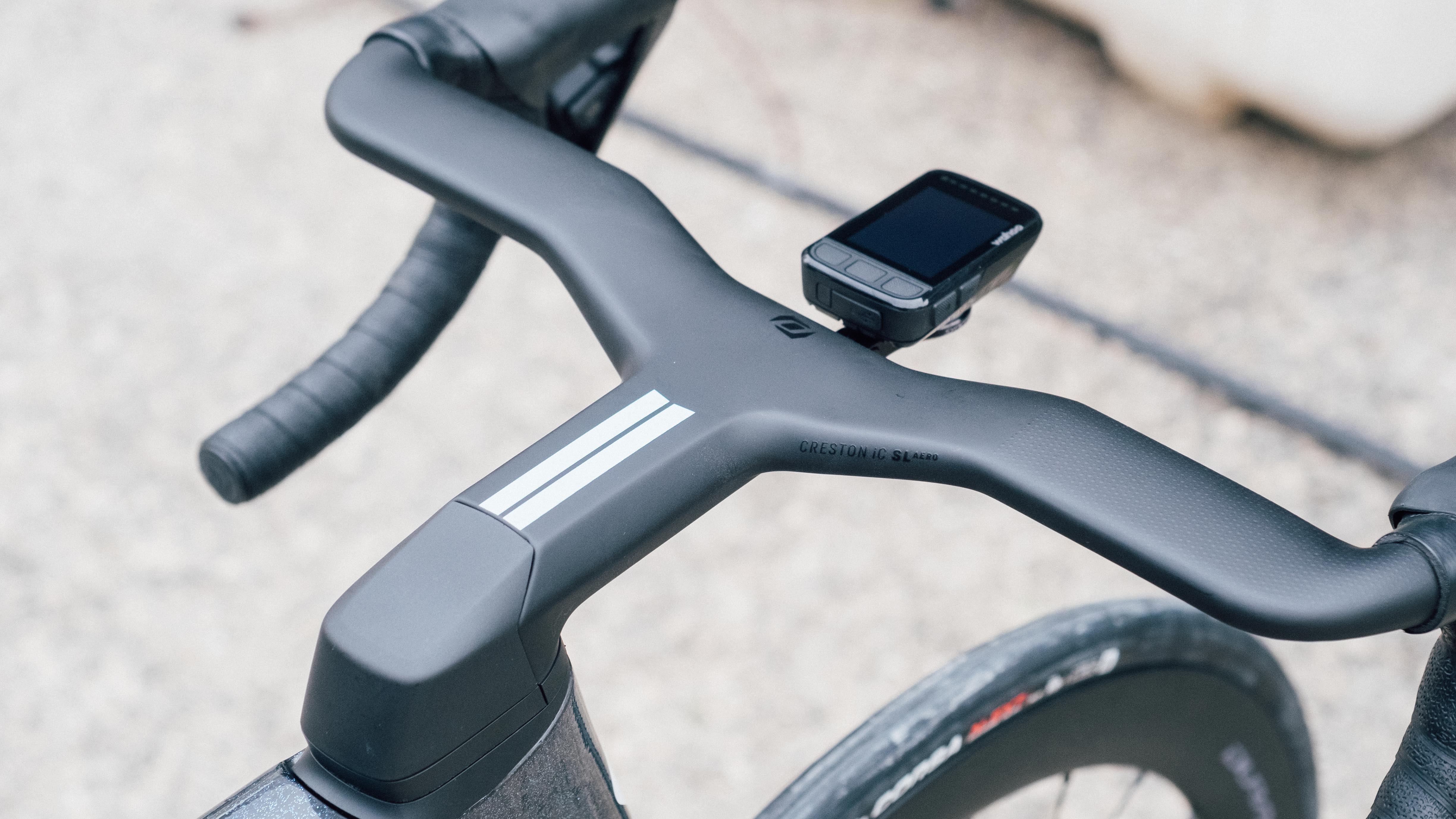
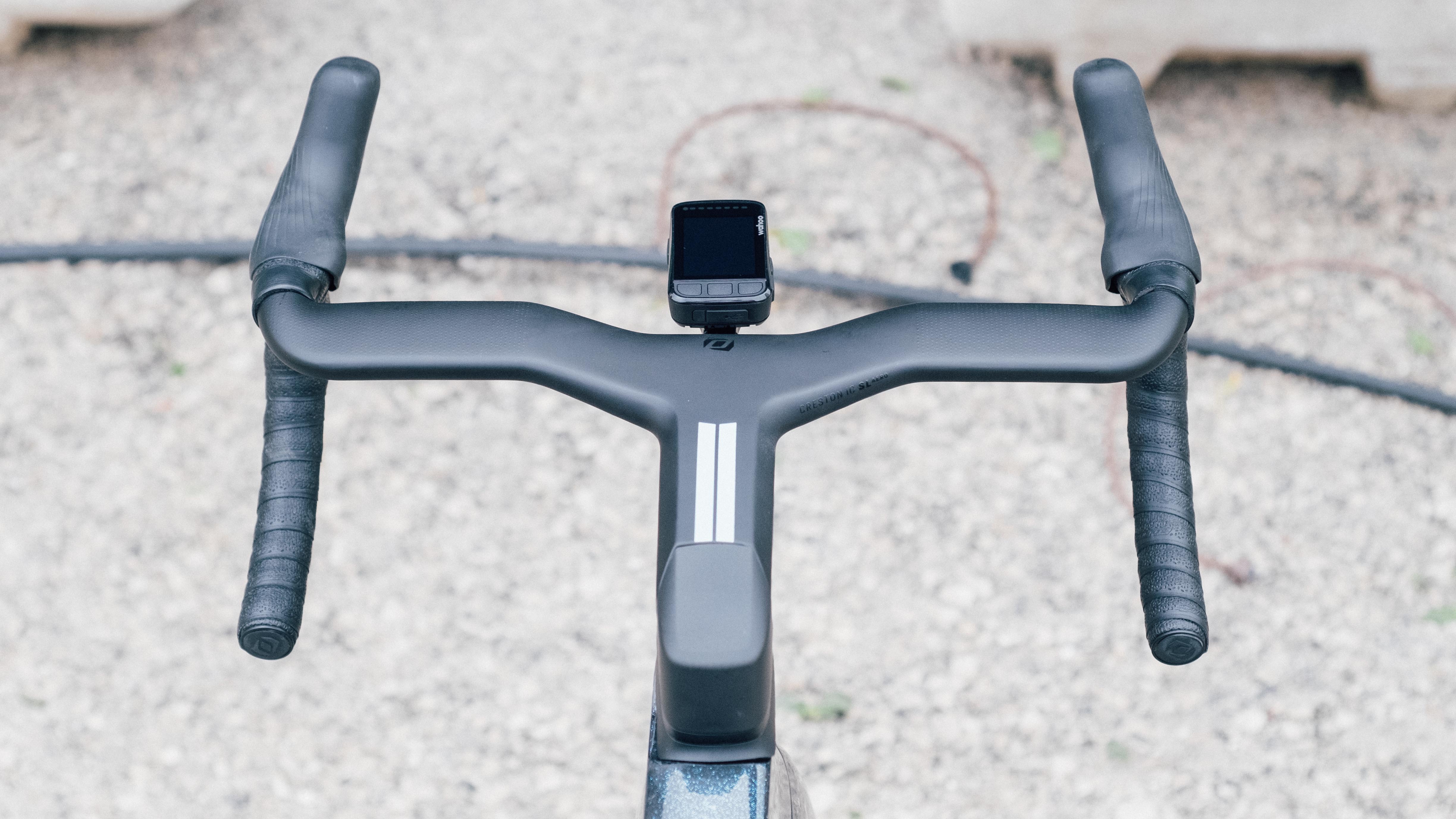
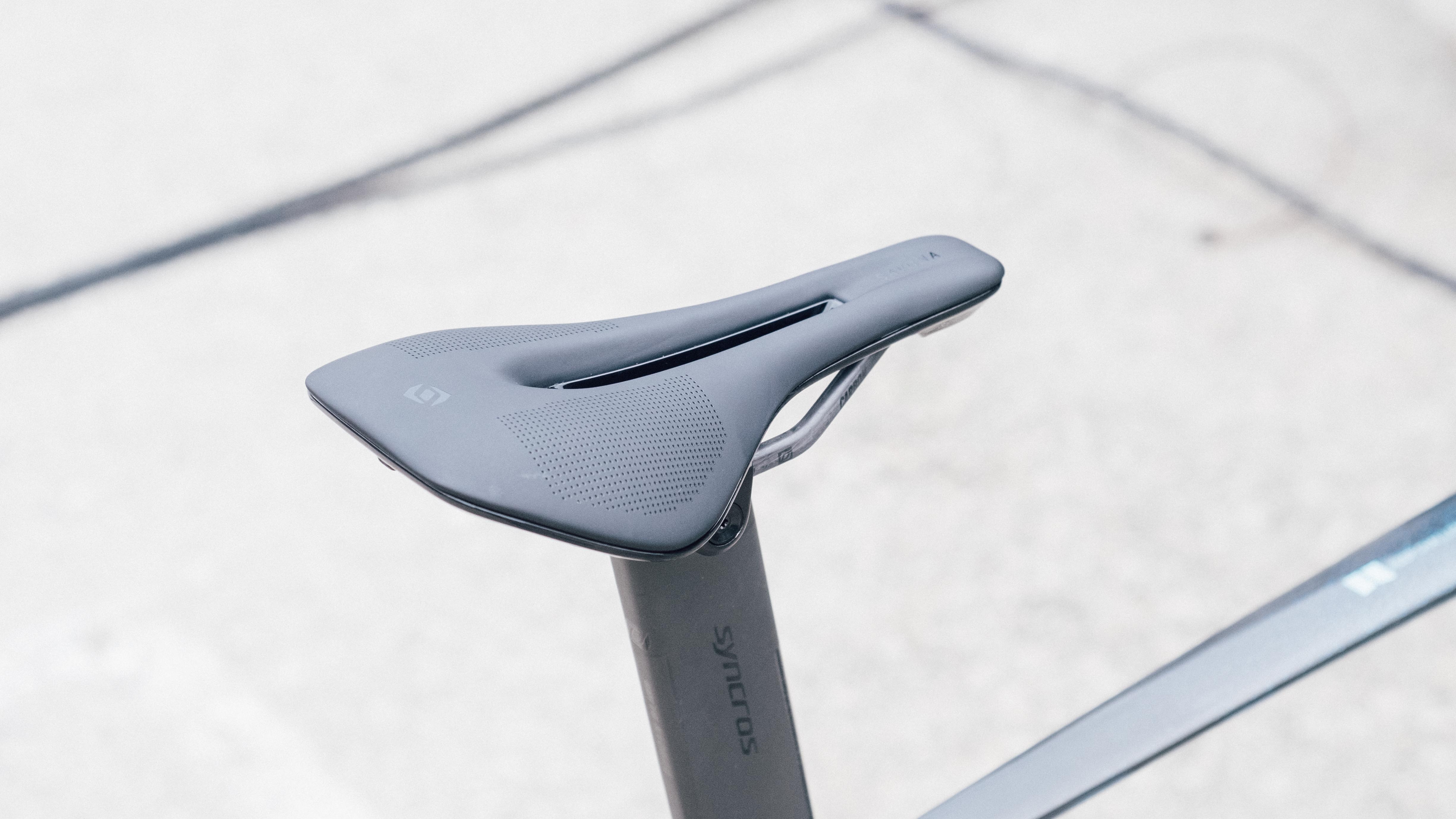
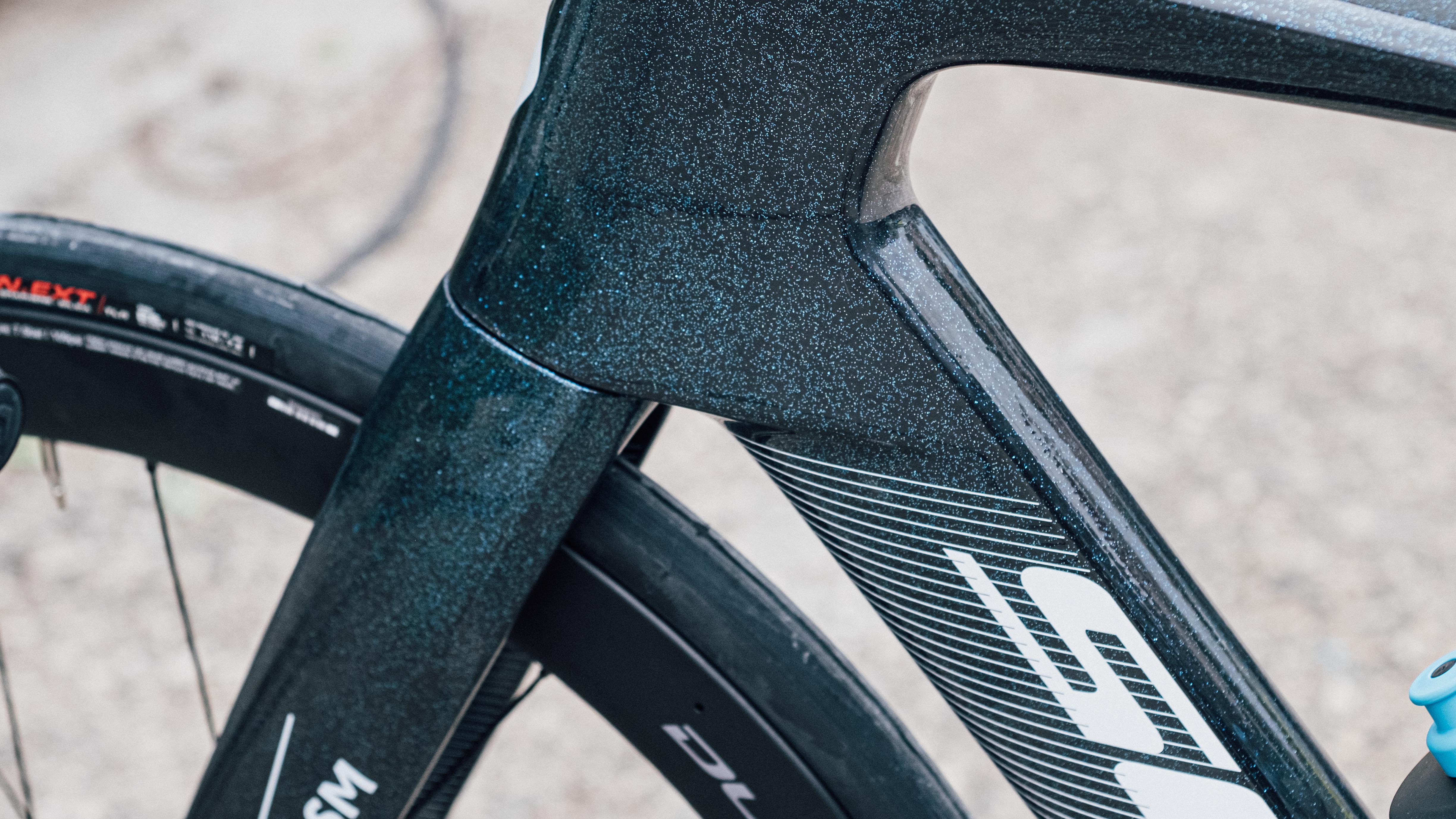
History
Here at Cyclingnews, we've been keeping track of the pro peloton's bikes for well in excess of a decade, sharing galleries as often as possible. For this section, we've dug into our archives for Patrick Bevin's bikes to bring you a run-down of the Kiwi's bikes since his entry to the WorldTour, and a gallery from his time at Team CCC in 2019.
| Year | Team | Main bike |
|---|---|---|
| 2023 | Team DSM | Scott Foil |
| 2022 | Israel-Premier Tech | Factor Ostro VAM |
| 2021 | Israel-StartUp Nation | Factor Ostro VAM |
| 2020 | CCC Team | Giant Propel |
| 2019 | CCC Team | Giant Propel |
| 2018 | BMC Racing Team | BMC TMR01 (Timemachine Road), BMC |
| 2017 | Cannondale-Drapac | Cannondale SuperSix Evo HM |
| 2016 | Cannondale-Drapac | Cannondale SuperSix Evo HM |
Patrick Bevin's 2019 Giant Propel
Back in 2019 we managed to squirrel away Bevin's CCC Team bike on the eve of the Tour de France to have a closer look at it. Unfortunately the bike didn't see the full course as Bevin became the first rider to abandon the race after breaking his ribs in a nasty tumble. Regardless, it's always good to see how the bikes are set up.
In this case Bevin was aboard the previous iteration of the Giant Propel, which has been updated for 2022 onwards. Sadly, given the orange scheme of the CCC Team, the bike is a plain black outfit; paint weights a surprisingly large amount, and many teams opt for a stealthy raw carbon look to save around 300g or so from the bikes weight.
The build is based around a Dura-Ace Di2 drivetrain, as per his current bike, but with CADEX 65 tubular wheels here, glued up with Vittoria Corsa Speed tyres. A CADEX saddle sits atop the integrated seatpost, which has been cut to Bevin's desired length. The carbon rails are slammed all the way forward in the clamp to get him as far over the bottom bracket as possible, and to allow him to use a borderline ridiculous 150mm stem, probably one of the longest in the peloton, which houses the brake hoses and routes them internally.
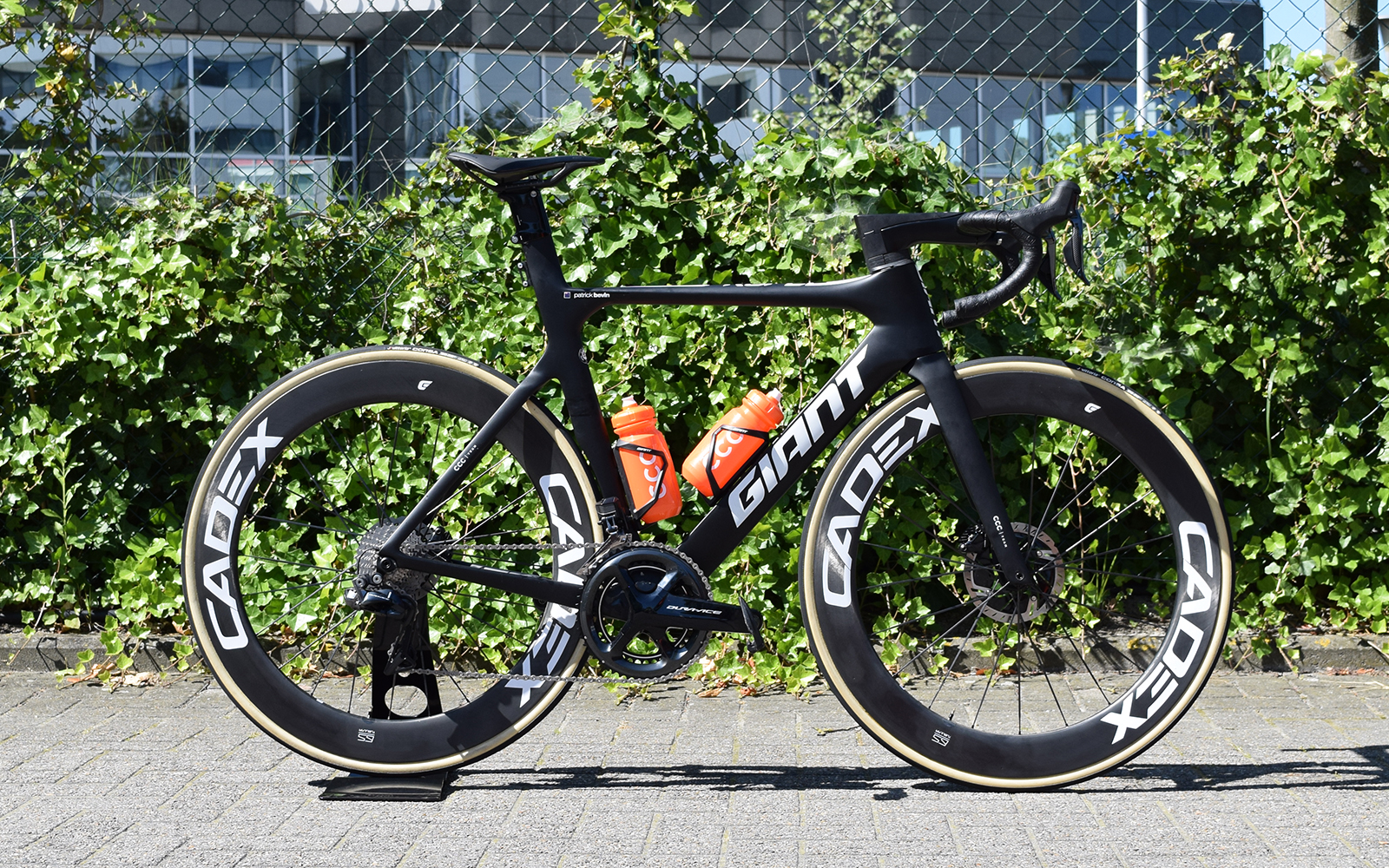
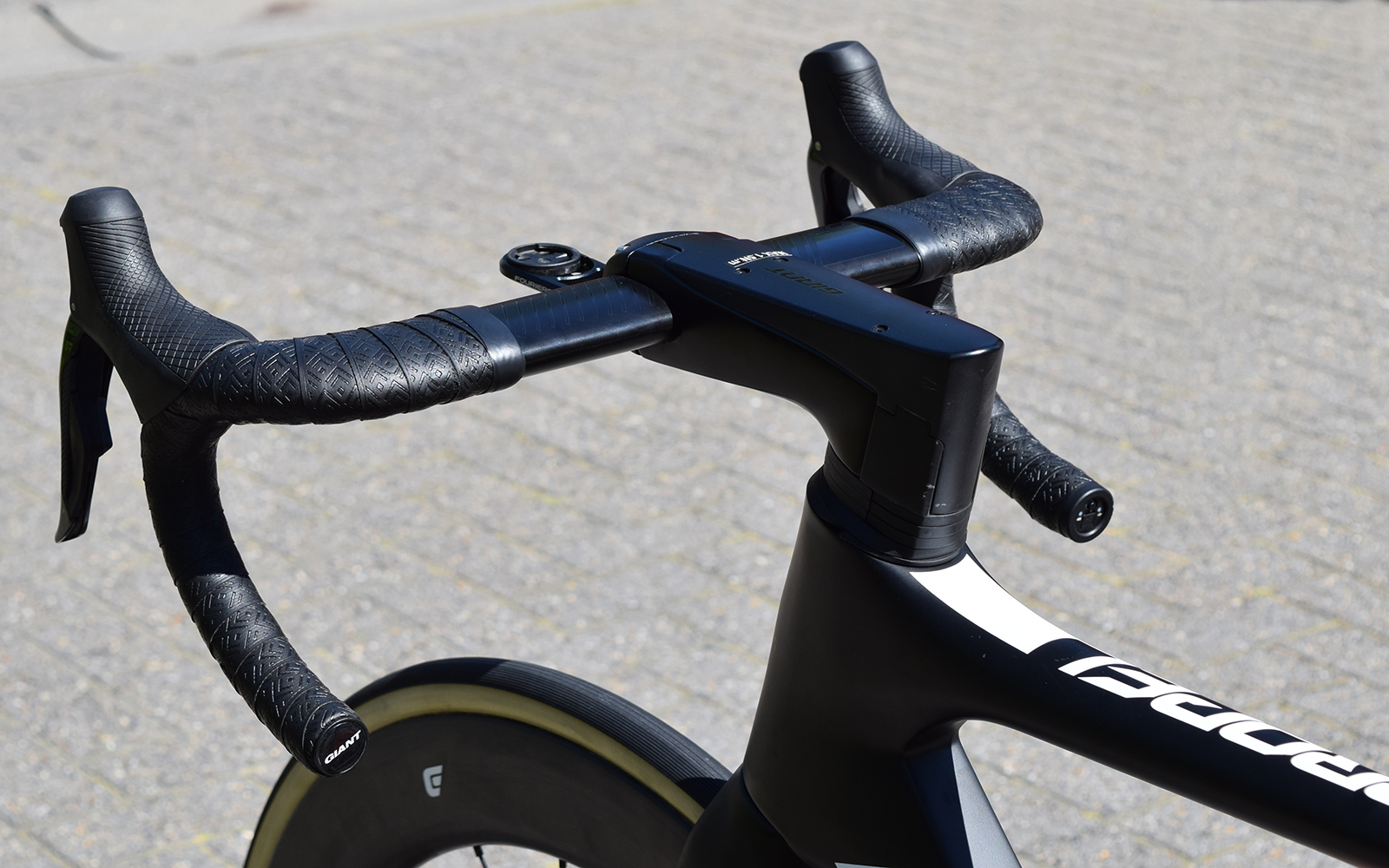
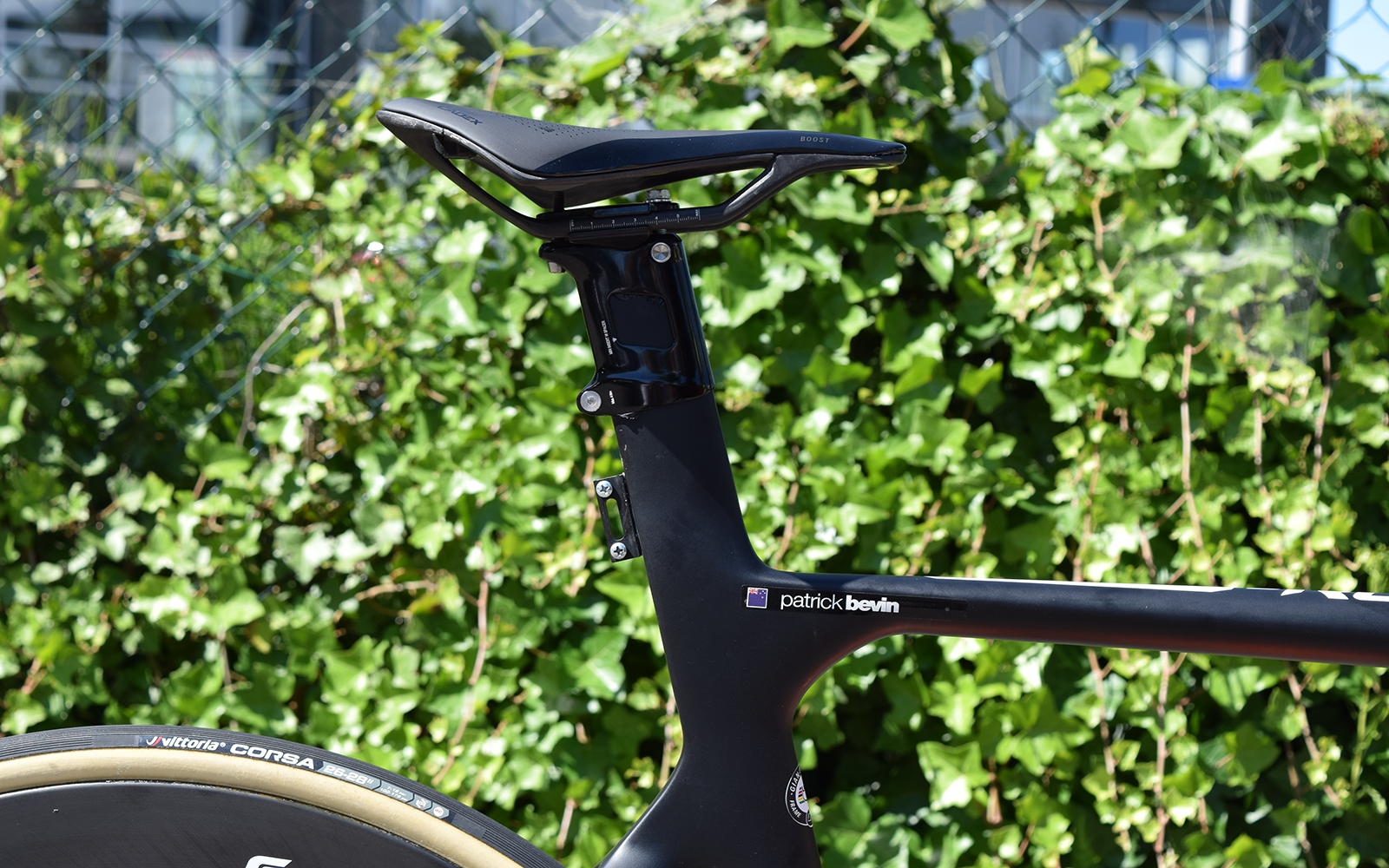
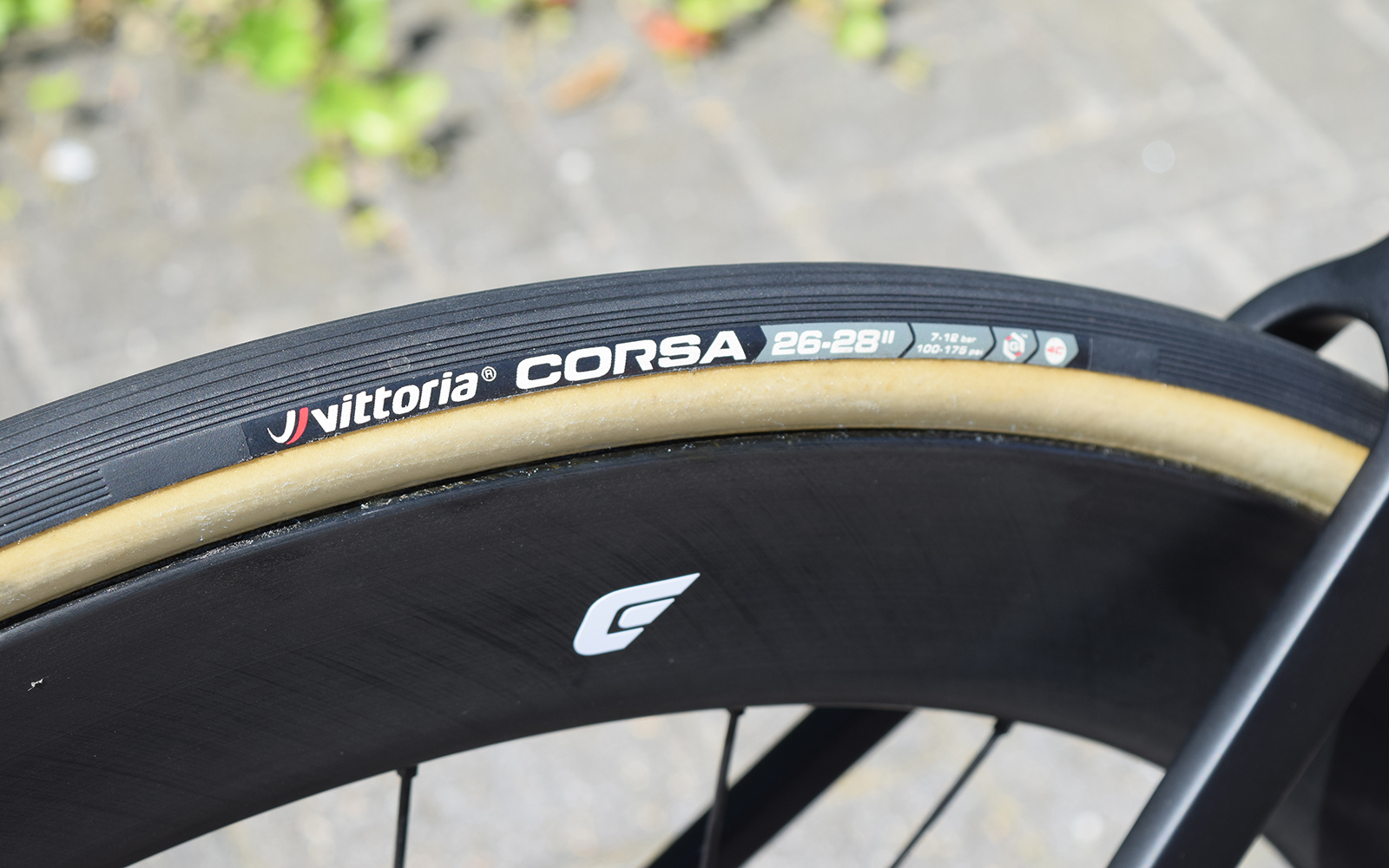

Will joined the Cyclingnews team as a reviews writer in 2022, having previously written for Cyclist, BikeRadar and Advntr. He’s tried his hand at most cycling disciplines, from the standard mix of road, gravel, and mountain bike, to the more unusual like bike polo and tracklocross. He’s made his own bike frames, covered tech news from the biggest races on the planet, and published countless premium galleries thanks to his excellent photographic eye. Also, given he doesn’t ever ride indoors he’s become a real expert on foul-weather riding gear. His collection of bikes is a real smorgasbord, with everything from vintage-style steel tourers through to superlight flat bar hill climb machines.